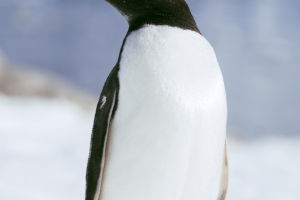Egret is a beautiful bird, it has a beautiful body, with white feathers, neither big nor small, and its feet are neither long nor short, everything is very suitable for it.
They inhabit coastal islands, coasts, bays, estuaries and rivers, lakes, ponds, streams, rice fields, and swamps near the coast. It can be seen alone, in pairs, or in small groups, and occasionally there are dozens of large groups together.
During the day, they often fly to the streams, rivers, salt pans, and rice fields near the coast for activities and foraging.
However, the egrets that people usually refer to are not "one kind" of egrets in the scientific sense, but an "aggregate" of four species of egrets that are all white.
There are 12 species of egrets in the world, of which the "great egret", "middle egret", "little egret" and "snow egret" are known as "egrets" because of their whiteness like snow.
Nex will introduce these four types of egrets in detail.
1. Ardea alba
As the most "stalwart" heron among the "Four Young Masters", it can reach a length of 90 centimeters. Its belly feathers are slightly yellowish. Moreover, it also has a pair of black legs and black feet.
The ornamental feathers are three rows of long and straight deer feathers with scattered barnacles on the shoulders and back of the Ardea alba. The feathers are ivory white.
As a migratory bird, Ardea alba migrates to its breeding grounds in the north every late March to mid-April. It is widely distributed in the world and is distributed in Eurasia, Africa, and Oceania.
2. Ardea intermedia
Their body size is between Ardea alba and Egretta garzetta, and their body length varies between 62-70 cm. They belong to large herons and medium-sized wading birds.
The Ardea intermedia is very well-proportioned, and spindle-shaped, with white fluffy feathers and silky demoiselle feathers. They are extremely vigilant and fly away immediately when they see humans approaching them from a distance.
But they don't mind mixing with other egrets. They are also widely distributed and are now common in Africa, the Indian Peninsula, Oceania, and East Asia.
3. Egretta garzetta
Like the Ardea intermedia, it also has yellow irises, a black beak, and feet. It is smaller than the Ardea alba, with a body length of only 56 cm. It is common on Hainan Island in China.
Worldwide, egrets are found in Asia, Europe, Africa, and Oceania.
4. Egretta thula
Its size is not large, similar to that of the Egretta garzetta, about 55-65 cm. It has immaculate white feathers and silky demoiselle feathers around its neck.
The distribution of Egretta thula is concentrated in the Americas, whether in North America, Central America, or South America. Their breeding range in the Americas is concentrated in the interior of the United States.


